What’s an oration of disorder? What most people think of as “order” consists in telling other people what they want to hear and then manipulating them. That’s how you sell them products. But the selling of products is the opposite of what art and listeners need, which is a harsh voice to tell us the truth.
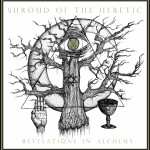 Shroud of the Heretic – Revelations in Alchemy
Shroud of the Heretic – Revelations in Alchemy
From the latest attempt of the Incantation clone camp comes Shroud of the Heretic with an album that combines a subtle melodic sensibility and the roaring chordstream bassy tremolo riffs that define that style. What is great about this is that it brings out the doom metal aspects of doom-death and is willing to allow the thunder to build and create the sense of sonic tunnel vision that makes this style so crushing. Shroud of the Heretic specialize in letting the music breathe through two riffs in combat from which a third rises, allowing the majority of the song to be taken in the interplay between those two riffs and then connecting them to other possibilities before returning for the descent. Revelations in Alchemy aims more for a doom metal aesthetic than a death metal one, and so benefits from the kind of repetition and churn that would not have worked on an Incantation album. It does not offer the same intensity as the older albums its worships, but it provides an alternative to the modern metal of this time that is well-composed even if not outright thrilling and terrifying. Given that its goal is, like that of most doom metal, to slowly press you into earth with inescapable repetition, Shroud of the Heretic seems to be on a path toward that end.
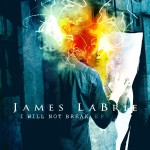 James Labrie – I Will Not Break
James Labrie – I Will Not Break
Coming to us from Dream Theater, James Labrie knows his audience likes jazzy heavy metal with a focus on positive themes. It makes sense that Dream Theater’s heritage is half Iron Maiden and half Rush, because they adopt the rhythms and harmonies of the former while using the quasi-prog stylings and outlook of the latter. Labrie continues in this vein but with more of an alternative rock sense of melody, creating something that sounds like a hybrid between Queensryche, Foo Fighters, and the kind of inspirational alt-rock-folk music that makes it into Lifetime Movie Network films at the end, when the girl hooks up with the right boy and apologizes to her mother and maybe even, finds Church (or God if she’s lucky). The result is probably a perfect commercial product in that it makes you feel good, with a “positive message found in the unlikeliest of places” (NPR) just like Rush, but has a basically good rhythm and is melodically compelling enough to hum along. But, like fellow Canadian artist Bryan Adams, Labrie has also indulged in a cheese fest that takes him firmly out of metal and plants him into the category of adult-oriented radio rock for people who want something a little cheerful and a little “edgy.” Thus he has left the hall and entered the suburban living room, while a vacuum runs or taxes are done, and the kids are upstairs listening to Dead Infection.
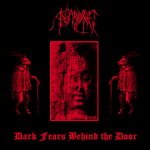 Asgardsrei – Dark Fears Behind the Door
Asgardsrei – Dark Fears Behind the Door
The distinctive ambient intro that opens this album remains one of the high points. While all of the elements are correct, like many post-genre bands, this is essential a mishmash of styles put into the framework of faster abrupt death metal. Many of the tropes here are familiar from black metal and death metal of the past two decades, but are put into a uniform flow of high-speed tremolo picking. There are some bizarre riffs here, and the band specialize in horror movie-sounding lengthy power chord phrases, but these often seem to lead nowhere. There’s a good aesthetic idea there, but for it to become musical, it must arise from the other riffs. Instead, it’s more like a tour of compartments on a train where each one offers something different but in roughly the same style and so it seems to add up, but ultimately it’s a search for the compartment with the interesting riff and that’s fairly random. As far as style, these guys have a distinctive one that’s all their own, despite being very retro to the point of outright allusion, but because of the way riffs are contexted as part of the overall rhythmic composition nothing stands out as out of place.
Imagine Blind Illusion, kicked forward a half-generation and thus using deathy vocals over melodic but buoyantly regular speed metal. These six songs were recorded in 1996 and finally released in 2004 but they sound like they’re straight out of the days of later Kreator or any of the death-influenced speed metal of the late 1980s. If you live for 1980s speed metal and like the somewhat shaky instrumentals of the underground, as well as the hangovers from 1970s metal which infest this like a Dave Murray impersonators’ conference, this divergence into metal history might appeal. Rhythmically consistent, Subreality has found a few grooves it likes and stays within them, using the mid-paced beat to hang riffs from like tentpegs holding canvas. Many of these riffs anticipate patterns that Pantera would later use to make its own music, previously a glam hair band with extensive heavy metal stylings, seem more “tough” on its way to discovering bro-core. Like most speed metal that does not take the riff salad approach, this quickly heads toward repetition as a familiar comfort and sing-song choruses outlining the rhythms of the song title. Not only that, but in the worst of the European approaches to speed metal, this is strictly verse-chorus (w/occasional riff detours) music based on the pace of the vocals, so it develops slowly if at all and features heavy repetition. Some have said this is an underground classic. “Classic of what?” I might ask.
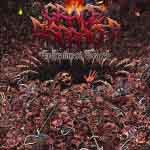 Grace Disgraced – Enthrallment Traced
Grace Disgraced – Enthrallment Traced
If you combined later Carcass’ Necroticism with later Suffocation, and decided that from modern metal you’d take the twisted riffs that converge on themselves through intricate lead rhythm patterns and discard the true randomness, you might be on a path to Grace Disgraced. Despite its fondness for internally rhyming names, this band makes a noodly type of death metal hybrid that emphasizes a contrast between spidery lead riffs and djent style percussive single-string riff texture. These songs do well once they get started and maintain a solid internal correspondence and tension; the real challenge this band is going to face in the future is figuring out how to make these songs distinctive. Much gets lost in the wash of riffs, blast beats and interludes; without shaping these songs around some distinctive trope, as Suffocation did (but Carcass ultimately did not) they’re going to find themselves getting lost in the background noise. In addition, many of the riff types are highly similar between songs which leads to a further loss of distinctiveness. All instruments are well-played and songs hold together without becoming random although often it’s difficult to discern what they’re trying to say.
The black metal that doesn’t sound like “post-metal” (emo, indie, shoegaze, metalcore) fully is generally built on the same model that later Gehenna and Gorgoroth built on, which is the churning sweep riff followed by a fast metal tremolo riff and over the top vocals. Adamus Exul makes a competent bid for this style and generally does it well but adorn it in so many other decorations that it becomes hard to tell where each song is going. In that there’s a revelation; these songs introduce themselves well, and deepen the experience with internal richness, but never manage to pick a place to go. Thus the band uses a lot of radical percussion and decoration to transition out of each song. By the last two tracks on the album, Adamus Exul have almost totally lost concentration and/or their hoard of ideas, and the release trails off into gibberish and leftover speed metal tropes. The first four tracks however show some potential as a musical experience but fall short of exposing themselves to the raw nihilism of black metal, in which they can no longer hide in the world of what is socially valued, but most confront the emptiness of life itself and the need to give it meaning through finding purpose which is not necessarily inherent. That is lost here and so what has promise ends up being an entertaining and aesthetically distracting experience but never leads to any profundity which might give this album staying power, even if it is better in technique and composition than most of what crosses my desk.
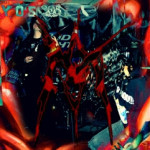 Malevolent Supremacy – Malevolent Supremacy
Malevolent Supremacy – Malevolent Supremacy
Looking at this title, you might think: middle of the road death metal with deathgrind influences. That indeed describes Malevolent Supremacy, who write songs around the blast-beat buildup and breakaway much as the Skinless-style bands did, but instead of aiming for slouchy brocore grooves, Malevolent Supremacy like high-speed riffs and clattering drums racing to a conclusion. These riffs rip along at the high speeds you might expect from the second Vader album and do fall into grooves, just not the simplistic bouncecore ones favored in fraternity houses and meth dens worldwide. Songs are well staged and unravel with some subtlety. However, this band relies too much on vocals to lead the guitars, which is backwards, and have a tendency to build up perfectly good songs only to extrude them into repetition as a way of preserving whatever mood was created. Too many flourishes on guitar also interrupt what would be, if stripped down and allowed to breathe as themselves, some powerful death metal songs. The frenetic approach rarely works because it smooshes all of that nice death metal textural complexity into a single background drone, which then requires the vocals get dramatic to compensate, but that doesn’t work so perfectly workable song structures get interrupted with “contrast” that amounts to fast breaks and quick turns to evade the attention of the listener. This band has potential but should probably try another tack.
 Queen V – The Decade of Queen V
Queen V – The Decade of Queen V
Flopping into the metal pile because guitars are used, Queen V should be filed instead under 1968 style music: brassy female vocalist, ironic songs, lots of hook and some boom. This is music designed for movies in that I can’t imagine anyone sitting down to something this unsubtle and finding meaning in it, but it would be something that a brain-dead leech like a movie producer might use to symbolize a character having a rebellious moment in between blowing her boss and getting mugged by hipsters. The music itself is crass and obvious. It whallops you over the head and howls at you. Nothing in it is poorly-executed, but as a judgment call, it seems to be designed for either people who have trouble digesting five-note runs or who like to play loud music to assert their personalities while they shower, mow lawns, mope over breakups or other drama. That erects a barrier for metal fans who would probably find it unsubtle and repetitive, but this might appeal to people who like Tracy Chapman and Liz Phair and other strong female vocalists with very simplified points to make.
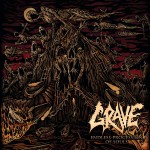 Grave – Endless Procession of Souls
Grave – Endless Procession of Souls
On the surface, this album is like later Fleshcrawl or Dismember works, a big warm hug of fuzzy Swedish distortion and adorably principled misanthropy. It stays within the traditional death metal style, but imports a lot of its song structure and riff from speed metal, which means there’s more chugging and bounce on this one. There’s also too much reliance on vocals leading the rhythm guitar and, while contrast is generally a good thing, too much contrast that is wholly unrelated to what went before and therefore seems more like an unmarked subway stop than a discovery of something sublime and previously obscure. For many who remember the speed metal of the late 1980s, a lot of this will seem paint by number: riff etches out a chord progression, counter-balances it with some unique feature like a melodic hook, and chorus re-hashes what is implied by the riff. Songs rip along and might warm you up on a chilly day for their uptempo but not pointless faster consistency. Like At the Gates Slaughter of the Soul, most songs focus around a family of similar rhythms which gives this album a very consistent feel. Many of the patterns on here show a strong Celtic Frost influence, and there’s nothing wrong with that. As an album, it is not detestable and definitely is better than the majority of stuff out there, but it may lack the clarity and unique articulation that makes people want to throw it on the player in the first place, which is much how I feel toward later Fleshcrawl and Dismember.
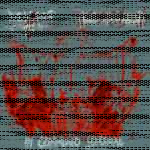 Nebiros / Nekromanteion – In Command Tenebrae split 7″
Nebiros / Nekromanteion – In Command Tenebrae split 7″
The new black metal underground has mixed the 1980s style of black metal with some of the more punk-influenced elements of death metal, creating a new style that is equal parts Angelcorpse and Venom, Bathory and GBH. Nebiros leads in with a track of fast storming proto-black metal in the Sarcofago style, complete with emulation of the “catch-up” drum fills which filled in the space between uneven length guitar tracks and the drums which were recorded later. This song rips through several quick riffs, then slides into a groove like one that early Samael might have used, before trailing out in a blaze of reprise of earlier riffs. Nekromanteion begins with a more melodic ripping death metal approach, using a grand riff to instill a sense of rhythm that explodes outward in a combination of two riffs, an open percussive riff more like something on a hardcore album, and a Norwegian-style minor key melodic riff. The result cycles after this point before ending in a processional riff that contrasts its initial theme. This goes for a softer approach with more atmosphere than the Nebiros track, which is why the two complement each other well. It’s hard to tell from this limited sample whether these bands are able to develop more material that maintains this level of interest, but for a starting gambit this 7″ shows a lot of what is missing in contemporary metal and two styles that can render it.
http://www.youtube.com/watch?v=TCH1RKRfp38
4 CommentsTags: Black Metal, death metal, oration of disorder, Speed Metal
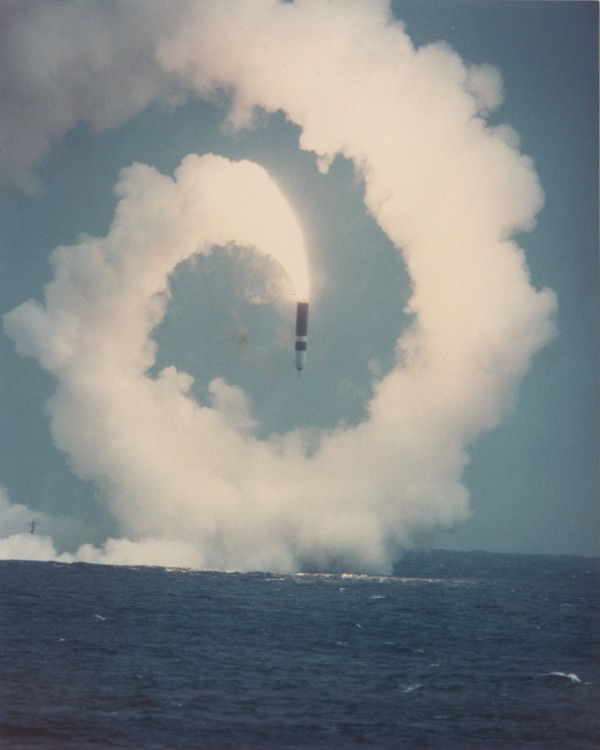
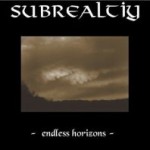
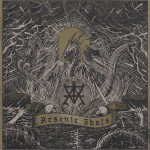
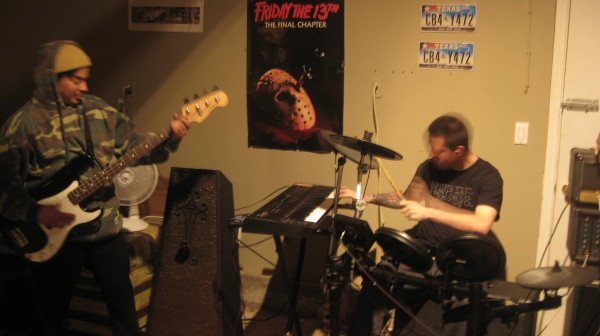
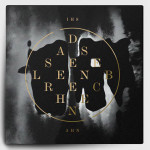
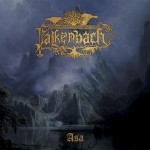
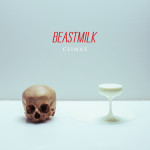
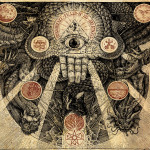
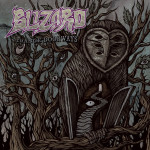
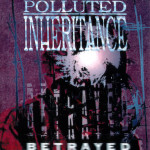
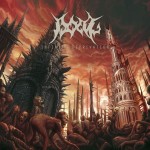
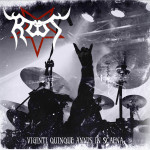
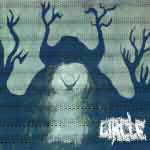
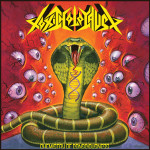
 Academia’s
Academia’s 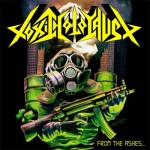 Toxic Holocaust – From the Ashes of Nuclear Destruction: This is not bad music, but it’s an imitation of something in the rearview mirror, which is hard enough without a tendency to combine the worst aspects of several genres. The songs are chaotic like American thrash, but then like German speed metal, they’re very chanty with lots of chorus activity and not much deviation from that rhythm and the chord progression that carries it. In fact, this was the kind of music that back in the 1980s, drove people to Metallica and Slayer for more of a musical experience. Most of what you get with Toxic Holocaust is like a suburban rap album, which is to say that you hear the vocals and pick up their rhythm, and then there’s distracting stuff going on in the background. Whatever the chorus is gets hammered in your brain because it repeats again and again (and again, and again). Riffs are very similar, and derive from identifiable archetypes in classic speed metal songs. Like most of those bands in the 1980s, it’s hard to construct an argument against this. It isn’t musically incompetent, and it’s roughly of the same style, and it’s definitely metally as opposed to the alt-indie-nu crowd. However, really the question is what’s missing, and we can’t spot it because neither it nor an analogue is there. This band lacks purpose. Songs are there to be like other songs, not to express something unique. While nostalgia is neat and all, this puts Toxic Holocaust in the same camp as the big pop bands, who are just making songs to sound like other successful songs, be catchy and make people dance.
Toxic Holocaust – From the Ashes of Nuclear Destruction: This is not bad music, but it’s an imitation of something in the rearview mirror, which is hard enough without a tendency to combine the worst aspects of several genres. The songs are chaotic like American thrash, but then like German speed metal, they’re very chanty with lots of chorus activity and not much deviation from that rhythm and the chord progression that carries it. In fact, this was the kind of music that back in the 1980s, drove people to Metallica and Slayer for more of a musical experience. Most of what you get with Toxic Holocaust is like a suburban rap album, which is to say that you hear the vocals and pick up their rhythm, and then there’s distracting stuff going on in the background. Whatever the chorus is gets hammered in your brain because it repeats again and again (and again, and again). Riffs are very similar, and derive from identifiable archetypes in classic speed metal songs. Like most of those bands in the 1980s, it’s hard to construct an argument against this. It isn’t musically incompetent, and it’s roughly of the same style, and it’s definitely metally as opposed to the alt-indie-nu crowd. However, really the question is what’s missing, and we can’t spot it because neither it nor an analogue is there. This band lacks purpose. Songs are there to be like other songs, not to express something unique. While nostalgia is neat and all, this puts Toxic Holocaust in the same camp as the big pop bands, who are just making songs to sound like other successful songs, be catchy and make people dance. 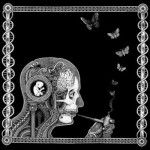 Soen – Cognitive: Somehow, people say they’re doing what they’re afraid they’re not doing. Soen is nu-progressive metal, which means that it’s basically a very vocals-intense, “passionate” form of indie rock — think post-1990s style drama-intense male vocalist nonsense — with occasional metal riffs. If you don’t mind the discount Morrisey style vocals, you will not be immediately set off by this album, but the grim fact is that this style of music is easy to produce and bands are a dime a dozen. These “deep” vocals end up sounding more like someone belting out over-emphatic drama, mainly because once you strip aside the technique, there’s little actual variation. The metal riffs can be surprisingly good but not original. It’s amazing how people have been making this style of music for decades and yet it doesn’t occur to each generation that maybe, just maybe, this stuff isn’t as new and revolutionary as it claims. If you like regular rock music, and want it to have more soul-searching vocals that override the other form factors, as in Coldplay, you’ll really dig this. If you’re looking for metal, you’ll end up fast-forwarding between the metal riffs and have a 2.3 minute album here.
Soen – Cognitive: Somehow, people say they’re doing what they’re afraid they’re not doing. Soen is nu-progressive metal, which means that it’s basically a very vocals-intense, “passionate” form of indie rock — think post-1990s style drama-intense male vocalist nonsense — with occasional metal riffs. If you don’t mind the discount Morrisey style vocals, you will not be immediately set off by this album, but the grim fact is that this style of music is easy to produce and bands are a dime a dozen. These “deep” vocals end up sounding more like someone belting out over-emphatic drama, mainly because once you strip aside the technique, there’s little actual variation. The metal riffs can be surprisingly good but not original. It’s amazing how people have been making this style of music for decades and yet it doesn’t occur to each generation that maybe, just maybe, this stuff isn’t as new and revolutionary as it claims. If you like regular rock music, and want it to have more soul-searching vocals that override the other form factors, as in Coldplay, you’ll really dig this. If you’re looking for metal, you’ll end up fast-forwarding between the metal riffs and have a 2.3 minute album here.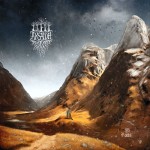
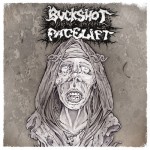
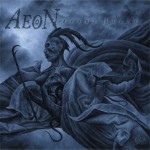 Aeon – Aeons Black: Sounding like later Deicide with influences from the mid-paced death metal of the last decade, Aeon creates some compelling rhythms and uses a heavy NYDM influence through harmonic guitar squeals and repetitive downstroke rhythms. The result is “heavy,” but melody is used only as an effect, and the album is assembled of many similar pieces that lacking a gestalt, flow together into catchy wall paper. The result is thankfully somewhat death metal, but has a newer metal influence, and through its lack of focus, combines different forms and styles into one giant approximation that has no really distinct point of view. It’s like a xerox of a xerox of a photograph of Silly Putty(tm) imprint of the original. While it isn’t incompetent, and has some moments of inspired musicality, it has no content that it manages to express and so it feels like a disorganized detour into the late 1990s, perhaps death metal being used to make an infomercial. I can see the juice machines, instant waffle makers, hair braders, etc. now, because that’s what this album feels like: the shelves of a death metal store, arranged in no particular order, as you walk past and then go out the door, not having found anything worthy of permanent acquisition.
Aeon – Aeons Black: Sounding like later Deicide with influences from the mid-paced death metal of the last decade, Aeon creates some compelling rhythms and uses a heavy NYDM influence through harmonic guitar squeals and repetitive downstroke rhythms. The result is “heavy,” but melody is used only as an effect, and the album is assembled of many similar pieces that lacking a gestalt, flow together into catchy wall paper. The result is thankfully somewhat death metal, but has a newer metal influence, and through its lack of focus, combines different forms and styles into one giant approximation that has no really distinct point of view. It’s like a xerox of a xerox of a photograph of Silly Putty(tm) imprint of the original. While it isn’t incompetent, and has some moments of inspired musicality, it has no content that it manages to express and so it feels like a disorganized detour into the late 1990s, perhaps death metal being used to make an infomercial. I can see the juice machines, instant waffle makers, hair braders, etc. now, because that’s what this album feels like: the shelves of a death metal store, arranged in no particular order, as you walk past and then go out the door, not having found anything worthy of permanent acquisition.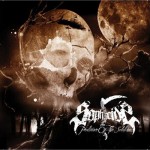
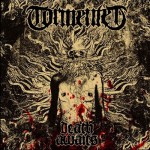 Tormented – Death Awaits: In 1992, the average death metal fan would walk 30 miles through the snow uphill both ways to hear a new Swedish death metal album. Sometime in the 2000s, Daniel Ekeroth made a handy video about how to get the Swedish guitar sound, and at least 4,096 hipster bands suddenly became Entombed-worship acts. The problem is that they don’t understand why Entombed did what Entombed did, so they’re imitating the appearance of Entombed and then injecting their own motivations into the art. Unforunately for them, their motivations are often what hipster bands want, which is ironic acclaim and something to brag about as they make coffees at the day job. Tormented is a perfect case in point. It’s competent, the riffs are gently melodic at times, and songs hold together thanks to a riff-chorus assembly with transitional riffs worked in. The problem is that these riffs express nothing, so they’re based on existing forms in a “pick one from column A, one from column B, one from column C” approach. This misses the point of death metal, which is to stich riffs together so that they tell a story that expands as the song goes on, then revert to a simplest possible reduction. What is revealed at the center of this music is an obsession with repetitive catchy vocals, and hard rock style relatively immobile riffs, instead of the soaring tremolo architectures that made Swedish death metal great. On the surface, this is pure Swede-worship; underneath, it has more in common with Wolfmother than Entombed.
Tormented – Death Awaits: In 1992, the average death metal fan would walk 30 miles through the snow uphill both ways to hear a new Swedish death metal album. Sometime in the 2000s, Daniel Ekeroth made a handy video about how to get the Swedish guitar sound, and at least 4,096 hipster bands suddenly became Entombed-worship acts. The problem is that they don’t understand why Entombed did what Entombed did, so they’re imitating the appearance of Entombed and then injecting their own motivations into the art. Unforunately for them, their motivations are often what hipster bands want, which is ironic acclaim and something to brag about as they make coffees at the day job. Tormented is a perfect case in point. It’s competent, the riffs are gently melodic at times, and songs hold together thanks to a riff-chorus assembly with transitional riffs worked in. The problem is that these riffs express nothing, so they’re based on existing forms in a “pick one from column A, one from column B, one from column C” approach. This misses the point of death metal, which is to stich riffs together so that they tell a story that expands as the song goes on, then revert to a simplest possible reduction. What is revealed at the center of this music is an obsession with repetitive catchy vocals, and hard rock style relatively immobile riffs, instead of the soaring tremolo architectures that made Swedish death metal great. On the surface, this is pure Swede-worship; underneath, it has more in common with Wolfmother than Entombed.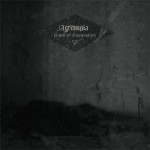 Agrimonia – Rites of Separation: It’s time we admit that post-metal is not metal, but new age metal. Or rather, it’s new age rock that wants to be metal so it can be “rebellious.” Officially rebellious, that is, so that if anyone claims they’re worshipping Satan or extremists, they can point to their soft juicy fruity core of new age everybody-kumbaya-happy. Post-metal not only takes influences from the new age movement and its desire for gentle ambience with some kind of quasi-spiritualist uplifting feeling that makes us feel like our rotting industrial dystopia encloses a paradise of personal emotional balance, positive thinking, etc. This music is like Sonic Youth throwing in some metal riffs and then droning on a note or two, with “bizarre” song structures that are actually very much in the verse-chorus with transitions style of post-punk bands. Nothing is badly done but the music has no soul. Its essence is in tossing out anything it thinks you might like, with no relationship between those parts. Thus it’s like hearing a conversation on the subway, where you pick up on juicy phrases and the rest is hubbub which fades into the ratcheting clack of the passing tracks.
Agrimonia – Rites of Separation: It’s time we admit that post-metal is not metal, but new age metal. Or rather, it’s new age rock that wants to be metal so it can be “rebellious.” Officially rebellious, that is, so that if anyone claims they’re worshipping Satan or extremists, they can point to their soft juicy fruity core of new age everybody-kumbaya-happy. Post-metal not only takes influences from the new age movement and its desire for gentle ambience with some kind of quasi-spiritualist uplifting feeling that makes us feel like our rotting industrial dystopia encloses a paradise of personal emotional balance, positive thinking, etc. This music is like Sonic Youth throwing in some metal riffs and then droning on a note or two, with “bizarre” song structures that are actually very much in the verse-chorus with transitions style of post-punk bands. Nothing is badly done but the music has no soul. Its essence is in tossing out anything it thinks you might like, with no relationship between those parts. Thus it’s like hearing a conversation on the subway, where you pick up on juicy phrases and the rest is hubbub which fades into the ratcheting clack of the passing tracks.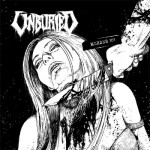
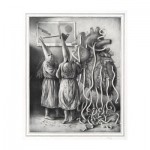
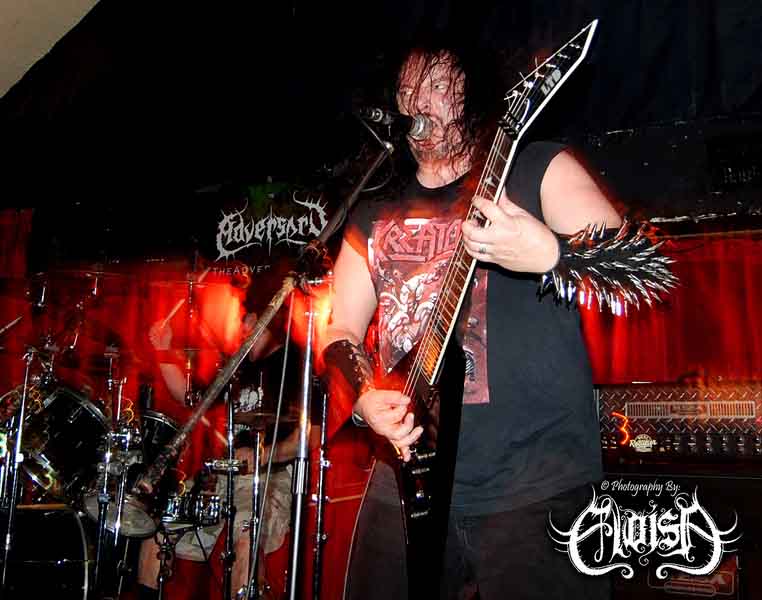 Tom Stevens has been providing technical extreme metal since the 80s. Known as a virtuoso on guitar and owning the distro/label Nokturnel Eclipse, he’s been a supporter of the old school since it began. Though Nokturnel has gone through numerous line-up changes, Stevens has defied odds and kept the flame burning with an indomitable urge to shred.
Tom Stevens has been providing technical extreme metal since the 80s. Known as a virtuoso on guitar and owning the distro/label Nokturnel Eclipse, he’s been a supporter of the old school since it began. Though Nokturnel has gone through numerous line-up changes, Stevens has defied odds and kept the flame burning with an indomitable urge to shred.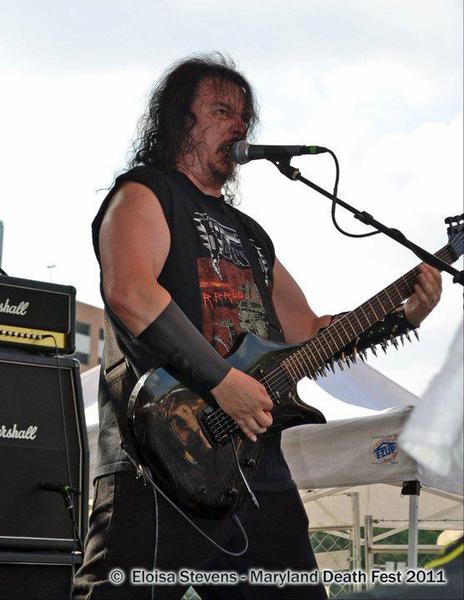 I haven’t heard much on Nokturnel since your last recording ‘Ancestral Calling’. What have you been up to?
I haven’t heard much on Nokturnel since your last recording ‘Ancestral Calling’. What have you been up to?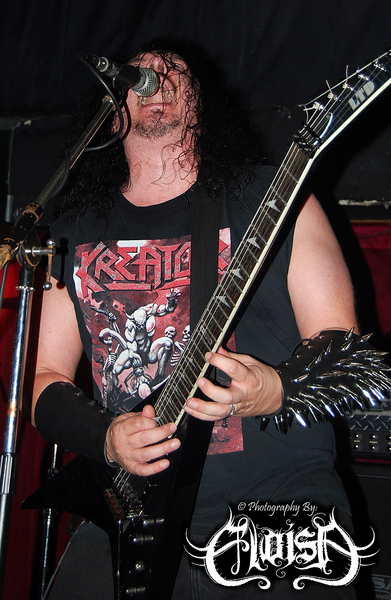 You played with Incantation for a while. What was it like touring with them? Any highlights that you’d like to share?
You played with Incantation for a while. What was it like touring with them? Any highlights that you’d like to share?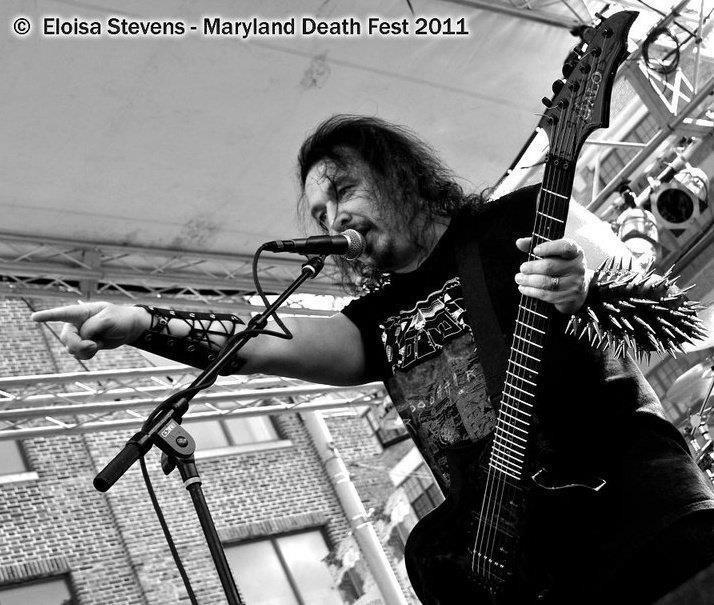 Please detail your contributions to Ripping Corpse. Are you still friends with Erik Rutan?
Please detail your contributions to Ripping Corpse. Are you still friends with Erik Rutan?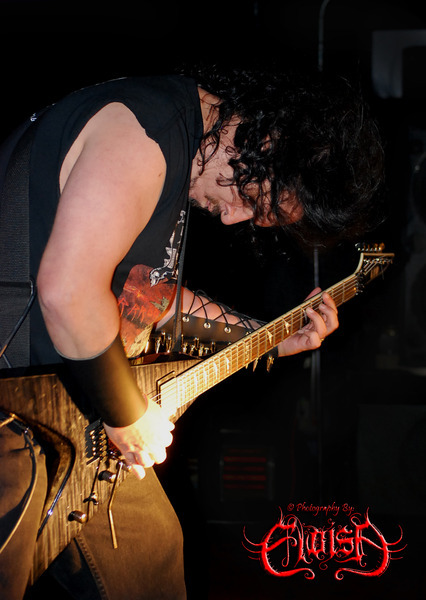 How long have you played guitar? You’re quite an amazing musician. What type of equipment, guitars, strings, etc do you use? What type of equipment would you recommend to new guitarists that are just starting out?
How long have you played guitar? You’re quite an amazing musician. What type of equipment, guitars, strings, etc do you use? What type of equipment would you recommend to new guitarists that are just starting out?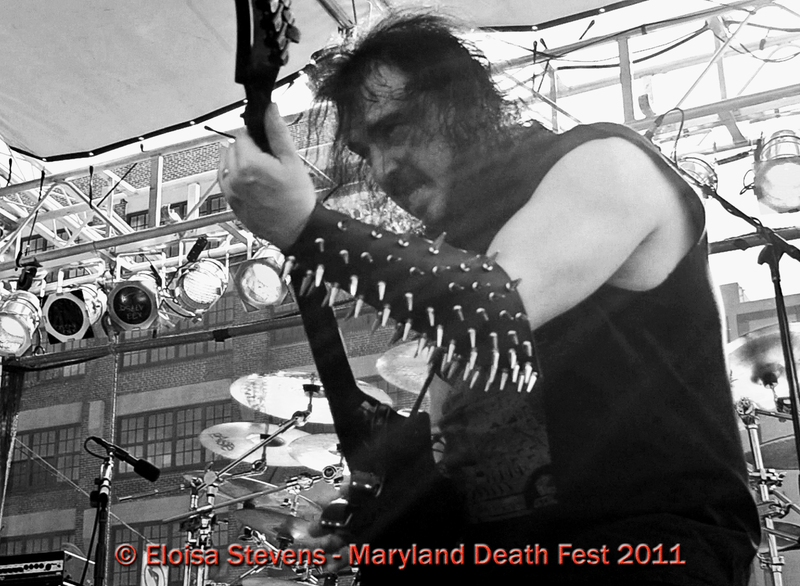 How well was the single “Ancestral Calling” received? What inspired you to write it? The riffs don’t seem to differentiate much, but the technical ability is amazing. How did you approach this song? What was your mindset? How will Nokturnel top this song in the future?
How well was the single “Ancestral Calling” received? What inspired you to write it? The riffs don’t seem to differentiate much, but the technical ability is amazing. How did you approach this song? What was your mindset? How will Nokturnel top this song in the future?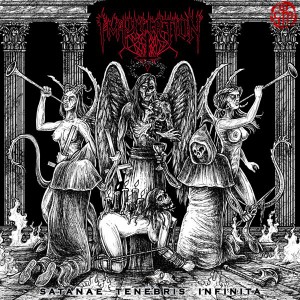 For a brief moment in time, forces of the cosmos united to shape from raw aether a new style of music. This music, called “death metal,” brought together a total alienation from modern life with a desire for the forbidden realms of death and the occult. In this new form, a few sage voices prevailed.
For a brief moment in time, forces of the cosmos united to shape from raw aether a new style of music. This music, called “death metal,” brought together a total alienation from modern life with a desire for the forbidden realms of death and the occult. In this new form, a few sage voices prevailed.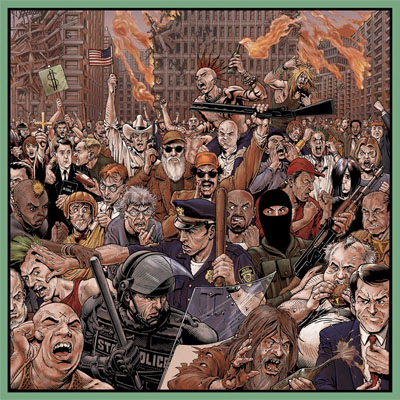
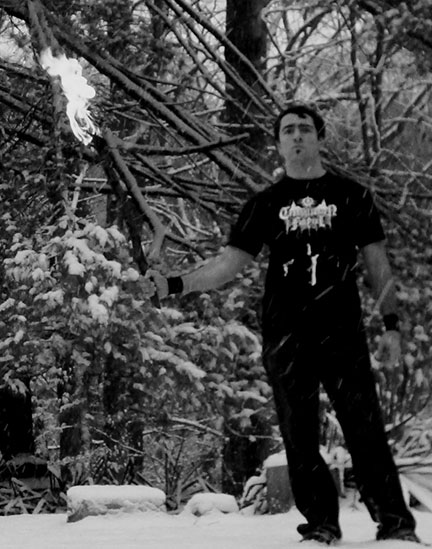 We previously posted an article on the exploits of Sleepwalker from Forbidden Records, Forbidden Magazine and from the black metal band A Transylvanian Funeral. That article can be viewed
We previously posted an article on the exploits of Sleepwalker from Forbidden Records, Forbidden Magazine and from the black metal band A Transylvanian Funeral. That article can be viewed 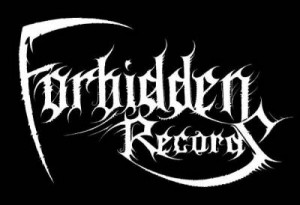
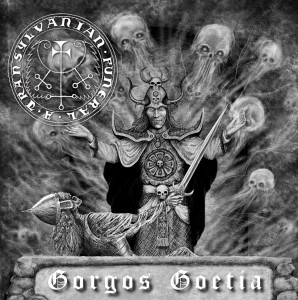 The themes vary but are based in Magick. ‘Moonchild’ has little to do with the novel and more to do with the novel’s point, the birth of a Magick child, the creation fashioned from a union between the Will and the Universe. Potential + Preparedness = Creation. ‘The Supreme Rite of Transmutation’ is a celebration of power, a giving of thanks and acknowledgement of the divinity within. ‘Night Hags’, on the other hand, is based on a story I read from one of Montague Summers’ collection of witchcraft and vampire legends about these vampire slaves, or ‘night hags’, as he were referred to, that would enter the home and steal the body of a soon to decease corpse. I enjoyed that story, because in it, the hags didn’t use ‘black magic’ to steal the body, they simply left a bottle of rum outside the door and when dying’s family were all drunk and fast asleep, they simply walked in and took his body. Depending on your perspective of things, they can appear either mundane or magickal. Many times, I have a song title in my head and work from that point forward, ‘Hymn to a Gorgon’ was one of those instances. From that song, I derived the album title, Gorgos Goetia, which is a difficult translation from Greek to ‘terrible sorcery’. I plan to release a collection of all lyrics from A Transylvanian Funeral in book form, as they have never been released previously, other than in PDF form and two songs with Plutonian Shore, ‘Moonchild’ and ‘The Supreme Rite of Transmutation’.
The themes vary but are based in Magick. ‘Moonchild’ has little to do with the novel and more to do with the novel’s point, the birth of a Magick child, the creation fashioned from a union between the Will and the Universe. Potential + Preparedness = Creation. ‘The Supreme Rite of Transmutation’ is a celebration of power, a giving of thanks and acknowledgement of the divinity within. ‘Night Hags’, on the other hand, is based on a story I read from one of Montague Summers’ collection of witchcraft and vampire legends about these vampire slaves, or ‘night hags’, as he were referred to, that would enter the home and steal the body of a soon to decease corpse. I enjoyed that story, because in it, the hags didn’t use ‘black magic’ to steal the body, they simply left a bottle of rum outside the door and when dying’s family were all drunk and fast asleep, they simply walked in and took his body. Depending on your perspective of things, they can appear either mundane or magickal. Many times, I have a song title in my head and work from that point forward, ‘Hymn to a Gorgon’ was one of those instances. From that song, I derived the album title, Gorgos Goetia, which is a difficult translation from Greek to ‘terrible sorcery’. I plan to release a collection of all lyrics from A Transylvanian Funeral in book form, as they have never been released previously, other than in PDF form and two songs with Plutonian Shore, ‘Moonchild’ and ‘The Supreme Rite of Transmutation’.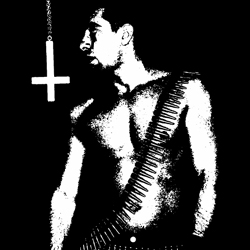 I doubt it but I never say never. I don’t disrespect what other people do but feel disrespected when someone asks me to play a bar and doesn’t take the time to research who they are contacting. A mass email to 1000 bands inviting them to ‘pay to play’ is garbage and I will not suffer a fool. If and when I do play live, I would like to document the event, video, audio, etc. and make a nice release out of it as it will probably not occur again. I just find I get more done alone. Maybe I spent too many years playing with people whose ideas did not coincide with my own and things would be different if I were different but if it isn’t broke, why fix it? Plus I would need to do it in Texas as all the potential members reside there currently…!
I doubt it but I never say never. I don’t disrespect what other people do but feel disrespected when someone asks me to play a bar and doesn’t take the time to research who they are contacting. A mass email to 1000 bands inviting them to ‘pay to play’ is garbage and I will not suffer a fool. If and when I do play live, I would like to document the event, video, audio, etc. and make a nice release out of it as it will probably not occur again. I just find I get more done alone. Maybe I spent too many years playing with people whose ideas did not coincide with my own and things would be different if I were different but if it isn’t broke, why fix it? Plus I would need to do it in Texas as all the potential members reside there currently…!

